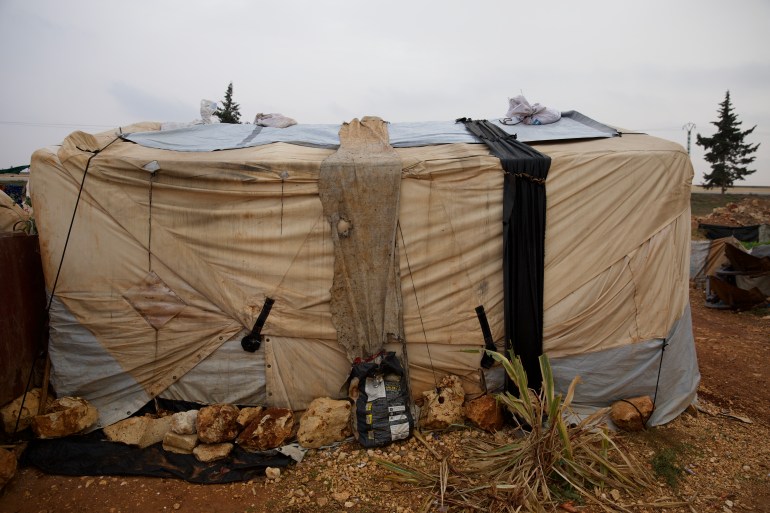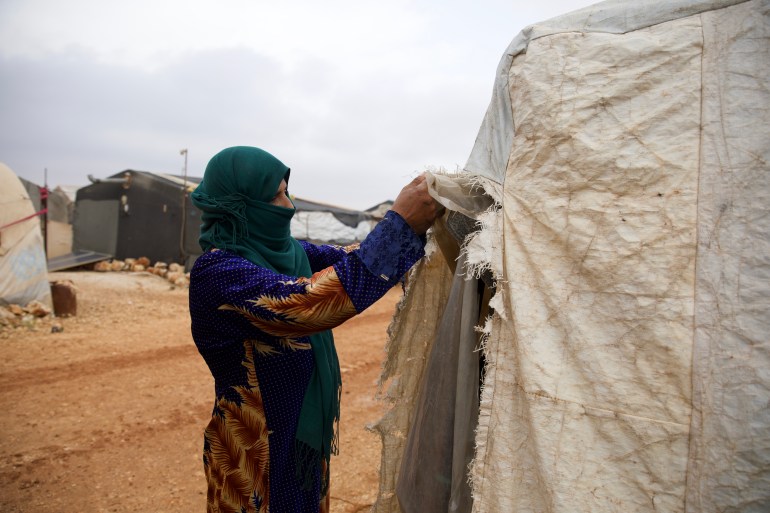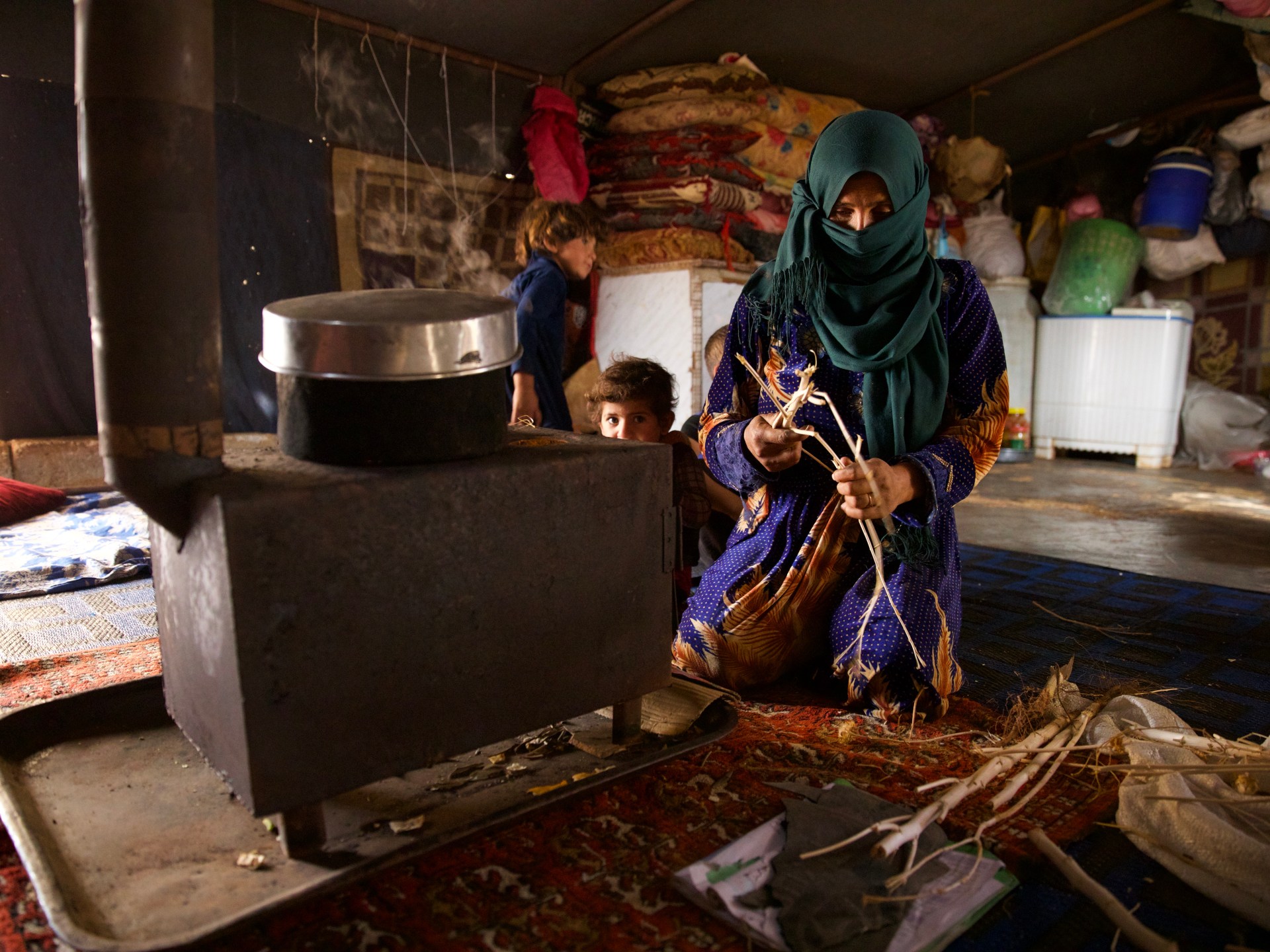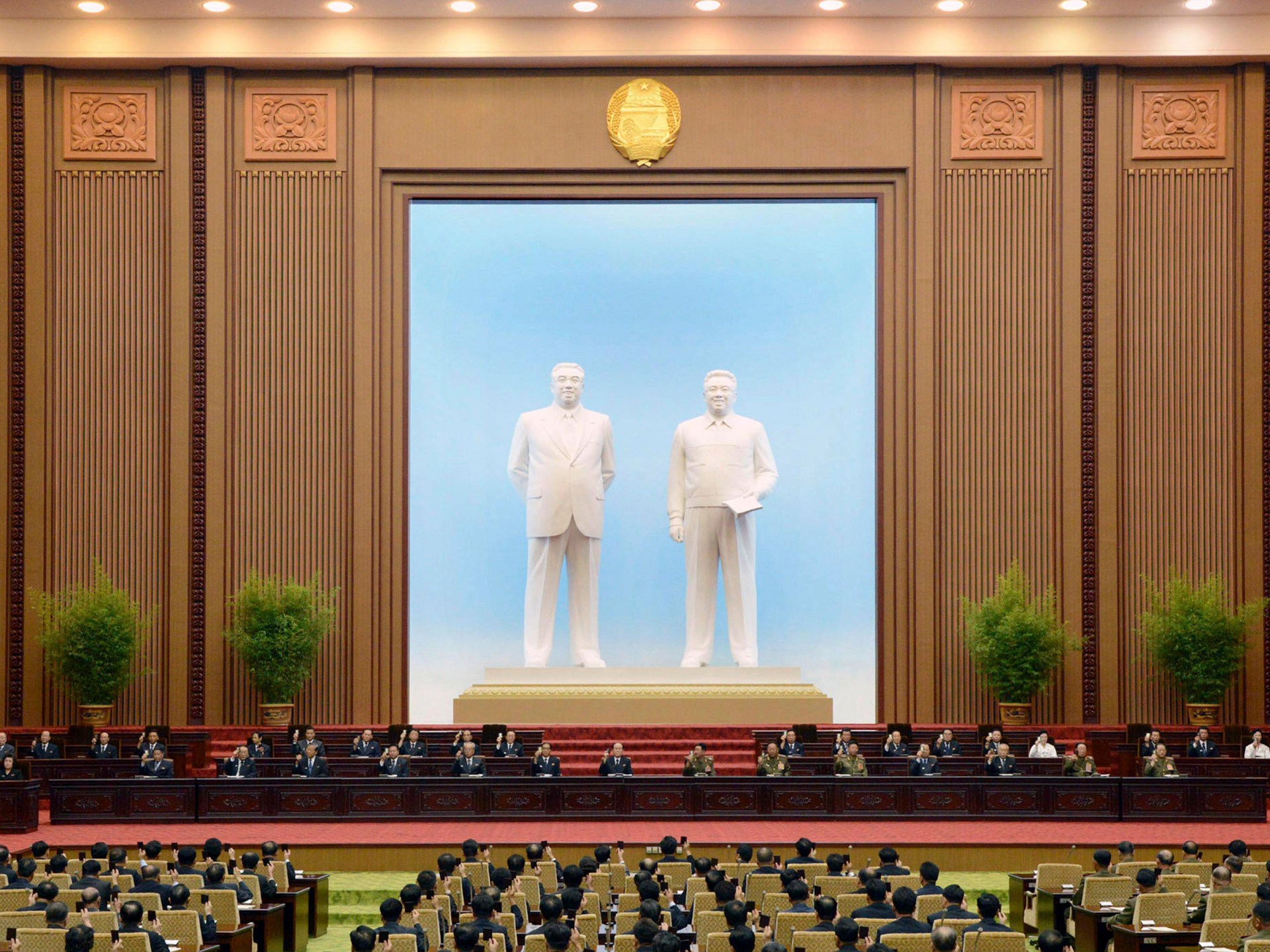Burning trash to stay warm, displaced Syrians struggle to survive winter
Kafr Yahmul, Syria – As winter sets in, the inhabitants of an informal camp just north of the city of Idlib are bracing themselves for the months ahead.
Fateem al-Yousef watched the sky anxiously as clouds gathered and she thought about what she and her family will be facing once the rains start. “I am afraid that water will seep into the tent and that my children will get sick,” she told Al Jazeera.
Fateem, 40, has been displaced since the early years of the war in Syria, which began in 2011. She left her village south of Idlib and moved from one village to another. Four years ago, she, her husband, Khaled al-Hassan, and their nine children finally settled in the Kafr Yahmul camp, where 70 families live on rented land.

The memory of their first day in the camp is still fresh in her mind, Fateem said, because it was accompanied by rain. She had recently given birth, and water leaked into the family’s tent. “The situation was very difficult because we were not adapted to it,” Fateem said. “We felt that there was water everywhere, and we did not have heating for our young children.”
These days, displaced people in northwest Syria are burning pistachio shells, hazelnuts, olives, odd bits of firewood and charcoal as well as scraps of plastic, nylon and cardboard to stay warm because the price of diesel has soared, but even these options are expensive for camp residents.
About 2.7 million people in Syria are in urgent need of aid this winter, according to the United Nations Office for the Coordination of Humanitarian Affairs (OCHA).
Syrians are facing a high cost of living, unemployment, inflation – prices have doubled since the start of 2023 – continued displacement and the ongoing effects of February’s earthquakes.
A severe shortage of funding for humanitarian projects in Syria will also compound the suffering of hundreds of thousands of people in 2024, OCHA warned.

Burning waste, damaging health
Fateem said she and her family can barely make ends meet even though most of them work. Her eldest daughter, who is 15, and her 14-year-old son work as farm labourers while the younger children collect scrap from roadsides. Her husband, 47, has no mobility in one hand but works whenever he has the opportunity. Even so, the family can’t afford everything they need to make it through the winter. Most adults earn less than $1 a day – hardly enough to provide for a family.
Living close by is Wadha al-Yousef, 36, who is not directly related to Fateem but is from the same village. She, her husband, Ahmed al-Sattouf, 42, and their five children, aged one to seven, have been living in Kafr Yahmul for five years. She told Al Jazeera that her family relies on collecting scraps of cardboard, plastic and nylon from the sides of the roads during the summer to be able to keep warm in the winter but burning comes at a cost.
“The hideous smell and smoke spreads throughout the camp, but people tolerate each other because they all have no other choice for heating,” Wadha said.
Burning plastic and nylon is damaging the family’s health. Wadha said her children suffer from constant illnesses caused by the smoke, and they find themselves making visits to health centres and clinics throughout the winter as a result.

Doctors Without Borders (Medecins Sans Frontieres, or MSF) warned this month of the dangers of burning such waste because they give off harmful fumes, which can cause respiratory diseases and infections, especially for children and the elderly.
The autumn rain clouds came a bit later than usual this year, but the cold and flooding are likely to be as bad as ever if not worse, according to forecasts. Last year, 306 refugee camps in northwestern Syria flooded during the winter. This year, OCHA said, 874 camps out of 1,525 in the region have been classified as “vulnerable” to flooding during the winter. Seventeen of them are “catastrophically” vulnerable, 240 are “extremely” vulnerable and the rest are “severely” so.
According to OCHA, the camps house about 2 million people, and at least 15,000 new tents are needed to each winter, but most of the existing tents have not been replaced for years and do not include the insulation needed to provide protection from the rain and cold. Neither Fateem nor Wadha have anything more than a thin nylon cover, sewn into the tents to insulate them and keep them dry. But this has not been enough to withstand even the first light rainfall of the year, which came a few days ago.
“I spent the night standing, holding the shade so that the water would not fall on my young children while they were sleeping,” Wadha said. She said her family is unable to afford more suitable insulation, which would cost about $70.

‘Cannot do more with less’
David Carden, UN deputy regional humanitarian coordinator for the Syria crisis, told Al Jazeera that the most effective solution to help the displaced is by moving them from tents to dignified shelters that offer more durability, privacy and protection against flooding and harsh weather.
If a family’s tent is replaced every six months, a shelter can last for five years, Carden said, adding that replacing tents frequently is “one of the most cost-effective investments”. However, only one-third of the funding pledged by donor nations for 2023 has actually been received, he added. This compares with just more than half the required funding being provided in 2022.
As a result of the lack of money for OCHA’s Syria Humanitarian Response Plan, only 26,000 families have been provided with caravans or housing units. According to the UN, about 800,000 people are still living in tents.
“We simply cannot do more with less,” Carden said. “But we fear the worst is yet to come next year.”




